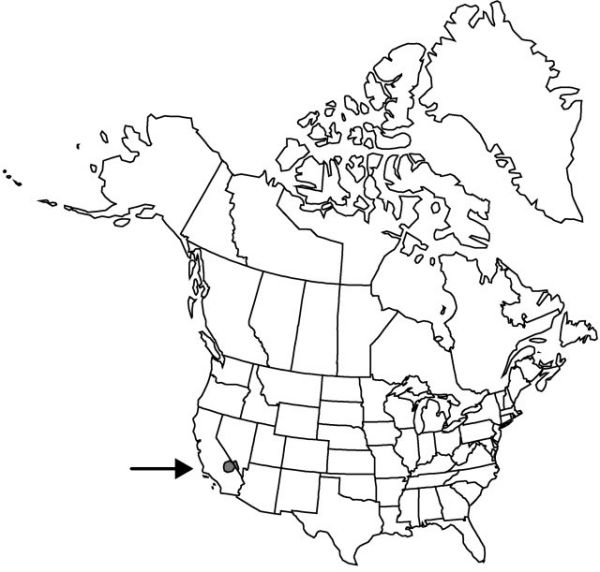Calochortus panamintensis
in A. Cronquist et al., Intermount. Fl. 6: 501. 1977.
Plants usually bulbose; bulb coat, when present, membranous. Stems usually not branching or twisted, 4–6 dm. Leaves: basal withering, 1–2 dm; blade linear. Inflorescences 1–4-flowered; bracts 2–4 cm. Flowers erect; perianth open, campanulate; sepals with dark purple or red blotch near base, lanceolate, 1–4 cm, apex acuminate; petals white tinged with lilac, with longitudinal median green stripe on abaxial surface, not spotted, narrowly obovate, 2–4 cm, ± glabrous; glands surrounded by red or purple border, round, depressed, surrounded by conspicuously fringed membrane, densely covered with short, unbranched or distally branching hairs; filaments ca. 6 mm; anthers bluish, oblong, 5–7 mm, ± glabrous, apex obtuse. Capsules erect, tan to brown, linear-lanceoloid, angled, ca. 7 cm, apex acuminate. Seeds light yellow, flat. 2n = 14.
Phenology: Flowering early–mid summer.
Habitat: Dry rocky slopes in pinyon-juniper woodland
Elevation: 2300–3200 m
Discussion
Calochortus panamintensis is restricted to the Panamint Mountains, Inyo County.
Selected References
None.
